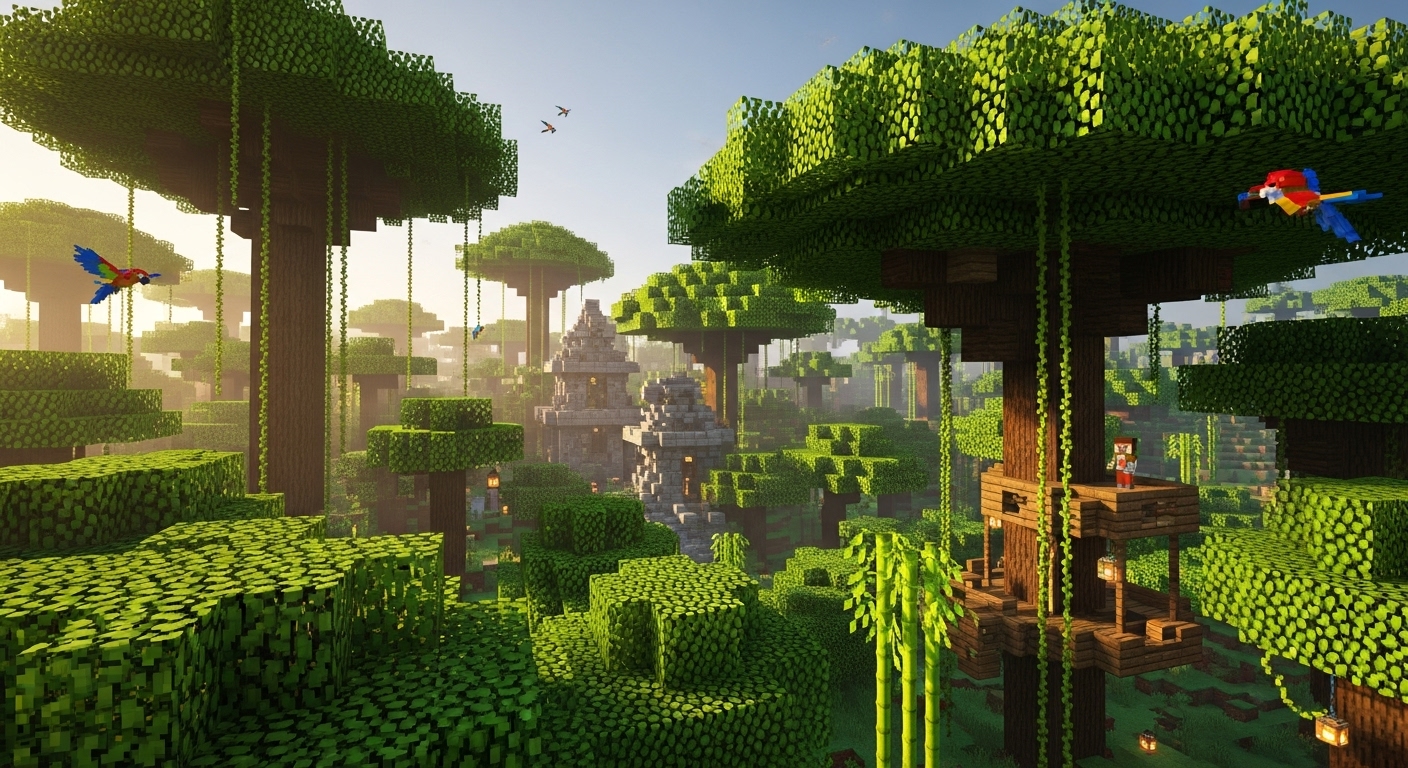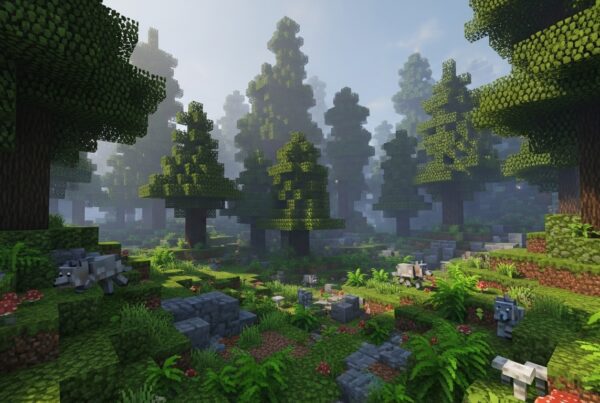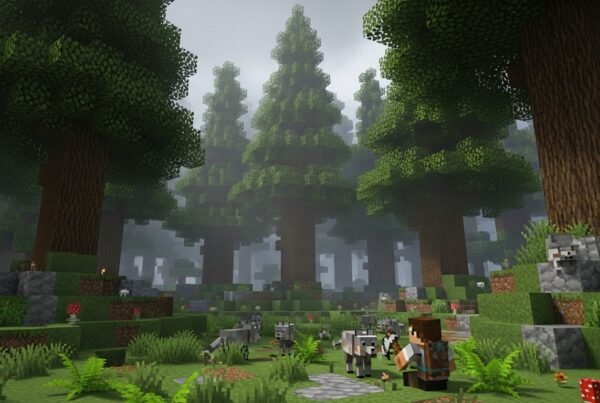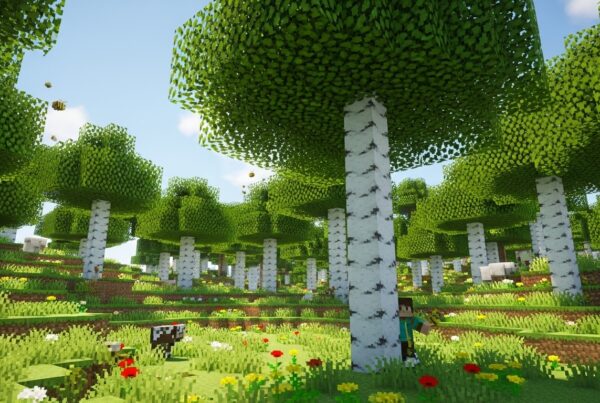The Jungle Biome in Minecraft is one of the most vibrant and resource-rich areas in the Overworld. Known for its towering trees, lush vegetation, and rare mobs, it offers both challenge and reward to players who venture into its depths. Beneath the dense canopy, you’ll find hidden jungle temples, exotic animals like pandas and parrots, and valuable resources such as bamboo, melons, and cocoa beans.
But surviving here isn’t easy — limited visibility, uneven terrain, and mob-infested shadows make exploration difficult. This guide covers everything you need to know about the Minecraft Jungle Biome — including where to find it, how to navigate it safely, and how to make the most of its unique resources.
What Is the Jungle Biome?
The Jungle Biome is a warm, humid biome filled with thick vegetation and tall jungle trees. It’s a paradise for explorers and builders, offering rare resources and exotic mobs not found elsewhere. However, it’s also one of the most difficult biomes to traverse due to its density and terrain.
Biome Variants
There are several jungle variants, each with distinct terrain and vegetation:
- Jungle (Standard): Thick canopy with towering trees and vines. Common home to ocelots and parrots.
- Sparse Jungle: Fewer trees and vines, easier to explore and build in.
- Bamboo Jungle: Dense clusters of bamboo with high panda spawn rates.
(Older versions may also include Jungle Hills and Modified Jungle variants.)
Where to Find Jungle Biomes
Jungles are relatively rare, generating in humid, warm regions of the Overworld — often bordering forests, plains, or deserts.
Tips for Finding Jungles
- Use the command:
/locate biome minecraft:jungle
to find the nearest jungle biome. - Look for dense green areas on maps — jungles stand out for their deep green coloration.
- Check coordinates or community-shared world seeds that guarantee jungle spawns.
Because of their rarity, jungles make excellent adventure or base-building destinations once discovered.
Visual Features and Terrain
The Jungle Biome is instantly recognizable by its towering 2×2 jungle trees and thick canopy of overlapping leaves. Vines drape from nearly every surface, and the terrain often includes rolling hills and cliffs.
Common blocks and vegetation include:
- Jungle Logs & Planks – Warm-toned wood ideal for building.
- Vines – Climbable and decorative.
- Cocoa Pods – Grow on jungle trees and yield cocoa beans.
- Melons – Naturally spawn on the forest floor.
- Bamboo – Found mainly in bamboo jungles, used for scaffolding and breeding pandas.
Pro Tip: Jungle trees drop saplings less frequently (around 2.5%) than other tree types, making reforestation more difficult. Always save saplings when chopping trees.
Exclusive Flora and Resources
Jungles are packed with renewable resources that make them ideal for sustainable living.
| Resource | Use |
|---|---|
| Cocoa Beans | Craft cookies and brown dye. |
| Bamboo | Create scaffolding, sticks, and breed pandas. |
| Melons | Source of food and glistering melon crafting. |
| Vines | Used for decoration and climbing structures. |
| Jungle Logs | Excellent for warm-toned builds. |
Because jungles are self-sustaining, you can live entirely off the land once your base is set up.
Mobs Found in Jungle Biomes
The Jungle Biome is home to several exclusive mobs and some of Minecraft’s most iconic wildlife.
| Mob | Type | Behavior | Notes |
|---|---|---|---|
| Ocelot | Passive | Can be tamed with raw fish | Scares away creepers |
| Parrot | Passive | Mimics hostile mobs | Tamed with seeds |
| Panda | Neutral | Has various personalities | Found in Bamboo Jungles |
| Chicken, Cow, Pig | Passive | Common overworld mobs | Great for food farms |
| Creeper, Skeleton, Spider, Zombie | Hostile | Spawn at night or in shadows | Hidden by dense foliage |
Pro Tip: Parrots mimic nearby hostile mobs, giving you early warning of danger.
Structures and Points of Interest
Jungle Temples
One of the most exciting features of the Jungle Biome is the Jungle Temple, a mossy stone structure filled with traps and loot.
Key facts about Jungle Temples:
- Found in standard jungle biomes.
- Constructed from mossy cobblestone and stone bricks.
- Contain two chests, often with gold, bones, iron, rotten flesh, and occasionally enchanted books.
- Include tripwire traps linked to dispensers filled with arrows — approach carefully!
Loot Tip: Look behind the levers to find hidden treasure compartments inside the temple’s walls.
Other Points of Interest
- Rivers and caves often cut through jungles, hiding resources like coal and iron.
- Villages or Pillager Outposts may generate near jungle borders.
- Treehouse opportunities: The tall canopy provides a natural base-building platform safe from mobs.
Survival and Exploration Tips
Surviving in the Jungle Biome requires patience, planning, and the right tools.
Here’s how to make the most of your expedition:
- Carry a sword or shears to clear vines and thick vegetation.
- Use torches or glowing blocks to mark your paths — jungles are easy to get lost in.
- Bring food and spare tools — traveling through the jungle consumes energy.
- Build treehouses or platform bases high above the forest floor for safety and visibility.
- Tame parrots to act as alarms for nearby mobs.
- Avoid traveling at night — the canopy blocks sunlight, allowing mobs to spawn frequently.
Bonus Tip: Combine bamboo scaffolding with vines to navigate the vertical jungle terrain more easily.
Farming and Renewable Resources
The Jungle Biome offers all the materials needed to build automated or renewable farms.
- Cocoa Bean Farm: Plant cocoa pods on jungle logs for endless cookies and brown dye.
- Bamboo Farm: Automate bamboo growth with pistons and observers — great for scaffolding and furnace fuel.
- Melon Farm: Easy to automate for food or villager trades.
- Tree Farm: Keep saplings to ensure a sustainable wood supply, as drop rates are low.
You can live entirely self-sufficiently in the jungle with a well-designed base and farm setup.
Comparing Jungle Biome Variants
| Variant | Key Features | Rarity | Recommended Uses |
|---|---|---|---|
| Jungle | Dense canopy, tall trees, temples | Moderate | Exploration & building treehouses |
| Sparse Jungle | Thinner foliage, fewer vines | Uncommon | Easier farming & construction |
| Bamboo Jungle | Filled with bamboo and pandas | Rare | Panda breeding & bamboo farming |
Fun Facts
- Introduced in Minecraft 1.2.1 — one of the earliest biomes to feature unique trees and vegetation.
- Cocoa beans only generate naturally in jungles.
- Pandas were added in the Village & Pillage update (1.14).
- Jungle Temples feature redstone tripwire traps, among Minecraft’s oldest redstone mechanisms.
- The music and ambient sounds in jungles enhance the sense of mystery and exploration.
Conclusion
The Minecraft Jungle Biome is a lush, lively, and sometimes perilous environment that rewards curious players. Its unique mobs, renewable resources, and hidden temples make it one of the most immersive biomes in the game. Whether you’re building a treetop village, farming bamboo, or exploring ancient ruins, the jungle invites creativity and adventure.
So pack your tools, tame a parrot, and step into the green wilderness — there’s always something new waiting under the canopy.






